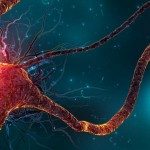My main goal is to understand how experience and sensory perception shape brain circuits to trigger behaviour. To tackle these questions, I implement different technical tools including a combination of behavioral analysis, viral vector intersectional strategies, neuroanatomy, in vivo imaging and optogenetic/chemogenetic approaches.
My work is mainly focus on three axes:
Adult neurogenesis in the olfactory system: For the last 15 years, I have been studying the functional role of adult neurogenesis in the olfactory system. Our main goal is to decipher the specific relationship between the activity of adult-born neurons and the function of the olfactory circuit (Alonso et 2006; Alonso et 2008; Alonso et al, 2012).
Neural circuit for hedonic value association. More recently, I focus my attention on how the brain assign hedonic value to stimuli during learning, a fundamental process that guides our emotional and behavioral responses. Nowadays, we are studying the functional and anatomical connectivity of different interneuron populations in the olfactory circuit, to decipher the impact of circuit remodeling on odor-reward association during learning both in normal and pathological conditions (Grelat et al, 2018).
Emotional valence and affective disorders. Emotional processing that involves the attribution of valence is one of the primary altered domains in mood disorders. My main goal is to untangle how the mammalian brain attribute positive or negative value to emotionally relevant stimuli in both normal and pathological conditions. We focus our attention on understand how value of emotional stimuli is encoded, maintained, and modulated in the mouse brain from early life to adulthood and how emotional value processing is disrupted in different affective states seeking to model mood disorders alterations (Bigot et al, 2020; Bigot et al, 2022; Bigot et al, 2023).









